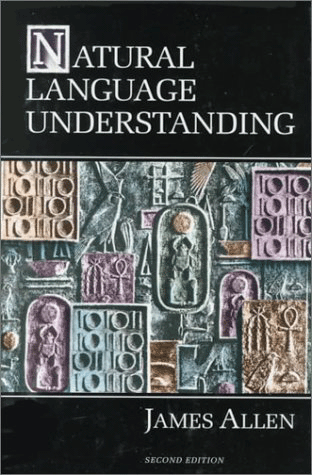
Natural Language Understanding (2nd Edition)
Since its publication, Natural
Language Understanding has become one of the standards in the
world in Natural Language Processing. Serving as an informative
introduction to computational linguistics, this book presents the
theory, algorithms and representations fundamental to industry and
academia. Although dated in some areas, this book delivers a mixture
of modern techniques and current research in natural language processing.
The approach is unique in its coverage of semantic interpretation
and discourse alongside the foundational material in syntactic processing.
This edition covered the latest research developments of the time
(1995) |
|
including context-free grammars and associated
framework, chart parsers used in syntactic and semantic processing.
This book offers coverage of two
new subjects: statistically based methods using large corpora
and an appendix on speech recognition and spoken language understanding.
This issue also cover semantics with an emphasis on compositional
interpretation. The author explains how to build natural language
systems and includes examples to help define domain specific words
such as “anaphora”. You can find more information on
this book at www.amazon.com/exec/obidos/tg/detail/-/0805303340/t/102-6775207-1354505#product-details.
The author James Allen, the John
H. Dessaurer Professor of Computer Science at the University of
Rochester, has taught natural language processing for over a decade.
Visit his home page at www.cs.rochester.edu/u/james.
Table of Contents
1. Introduction to Natural Language Understanding (NLU)
- Study of language, applications of NLU, language analysis, representations
and organizations of NLU systems.
2. Linguistic Background: An Outline of English Syntax
- Words, noun, verb and adjective phrases and simple sentences.
3. Grammars and Parsing - Sentence structure, finite
state models, parser, morphological processing and logic programming.
4. Features and Augmented Grammars - Morphological
analysis and the lexicon, parsing with features, definite clause
and unification grammars and augmented transition networks.
5. Grammars for Natural Language - Auxiliary verbs
and verb phrases, context-free grammars, noun phrases and relative
clauses.
6. Toward Efficient Parsing - Human preferences
in parsing, shift-reduce and deterministic parser, encoding uncertainty
and ambiguity and partial parsing.
7. Ambiguity Resolution - Statistical methods, basic
probability theory, lexical probabilities, part-of-speech tagging,
and a simple context-
|